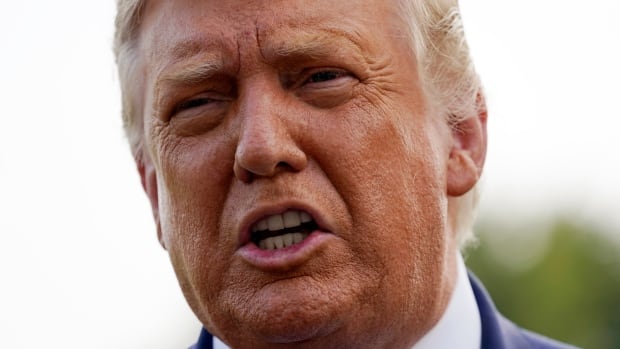U.S. President Donald Trump’s comments on Friday suggesting Canada is keen to reopen the border with his country stand in direct contrast to statements made by Canadian officials supporting the continued border restrictions.
“We’re looking at the border with Canada. Canada would like it open, and, you know, we want to get back to normal business,” Trump said at the White House, adding that “we’re going to be opening the borders pretty soon” to take advantage of the renegotiated NAFTA.
“We’re working with Canada. We want to pick a good date, having to do with the pandemic. And I happen to think we’re rounding the turn,” Trump said.
Asked by CBC News to respond, a spokesperson for the Prime Minister’s Office pointed to a tweet from Public Safety Minister Bill Blair earlier in the day, saying the border will remain closed to non-essential travel until at least Oct. 21.
“We will continue to base our decisions on the best public health advice available to keep Canadians safe,” Blair wrote.
U.S. President Donald Trump responded to a question about the border as he left the White House on Friday. 0:48
When CBC first reported on the extension of restrictions into October — they were due to expire this week — one source said Canadians should prepare for them to last even longer.
The official stopped short, however, of saying they would remain until Christmas, but that the policy was open to tweaks.
Three senior sources with direct knowledge of the situation, speaking to CBC News on condition they not be named, have repeatedly expressed — over recent months and again on Friday — how pleased they are with the current restrictions.
One source said both Canada and the U.S. see them as effective and as strong, co-operative measures necessary to respond to the pandemic.
Keeping Canadians safe
Kirsten Hillman, Canada’s ambassador to the U.S., said last week that she speaks with U.S officials about the border restrictions on a weekly basis and there is a general agreement the current situation is working well.
“The measures are doing what they were designed to do … to allow the flow of commercial goods and essential services while controlling the spread of the virus and reduce the risk to our citizens on both sides,” Hillman said.
“When push comes to shove, our No. 1 goal is going to be to keep Canadians safe.”
Blair told reporters Wednesday that he’s looking to make adjustments to allow more travel on humanitarian grounds, but that any changes will be limited and that, broadly, he wants to keep the restrictions.
90% support
With COVID-19 caseloads still high in many U.S. states, public opinion surveys have also suggested there’s little appetite in Canada for change.
A new poll by Research Co. found earlier this month that out of 1,000 Canadians surveyed online at the end of August, 90 per cent agreed with the current restrictions.
The world’s longest international border has been closed to non-essential travel for months though essential workers — such as truck drivers and health-care professionals — are still able to cross by land. Canadians are also still able to fly to U.S. destinations.
Ottawa has also moved to curb the movement of Americans through Canada on their way to Alaska. U.S. travellers destined for the northern state have been limited to five crossings in Western Canada and they must commit to taking a direct route.
In June, a man travelling from Alaska to the continental United States was charged with violating Canada’s Quarantine Act. He was accused of twice failing to follow COVID-19 public safety rules while in Banff, Alta.
If he’s found to have violated a quarantine order, he could be fined up to $750,000 or sentenced to six months in jail.
Source: – CBC.ca
Source link
Related


































